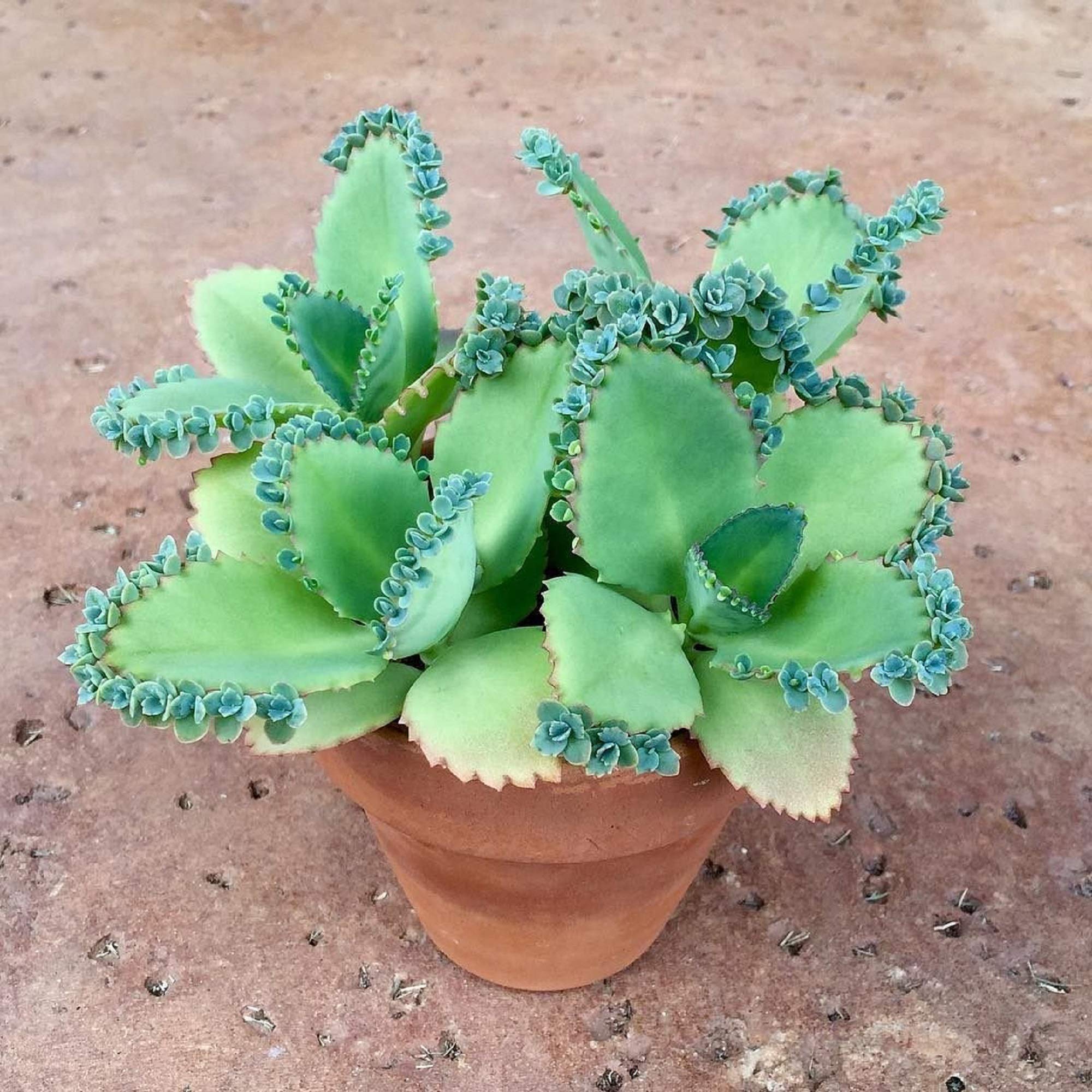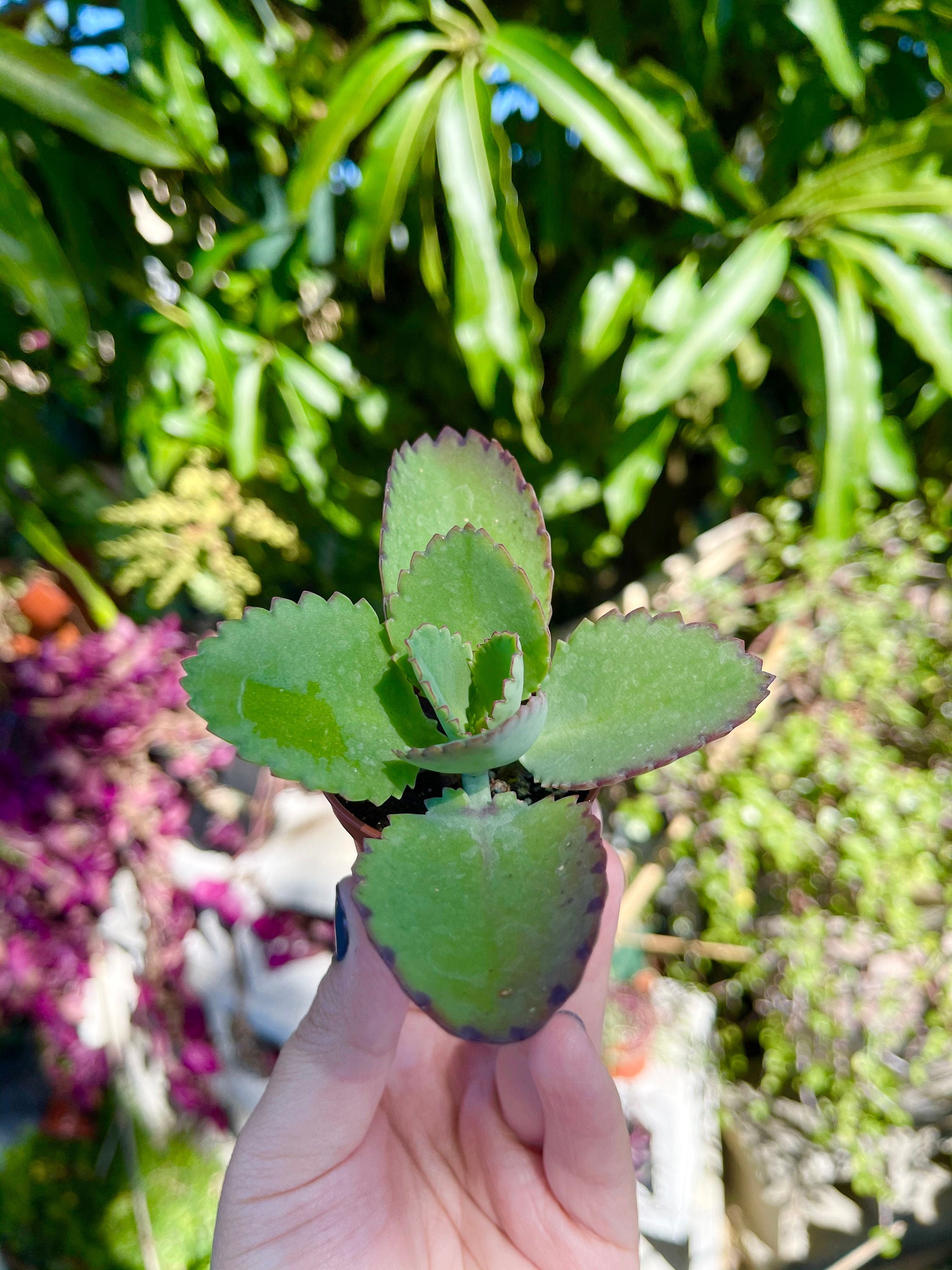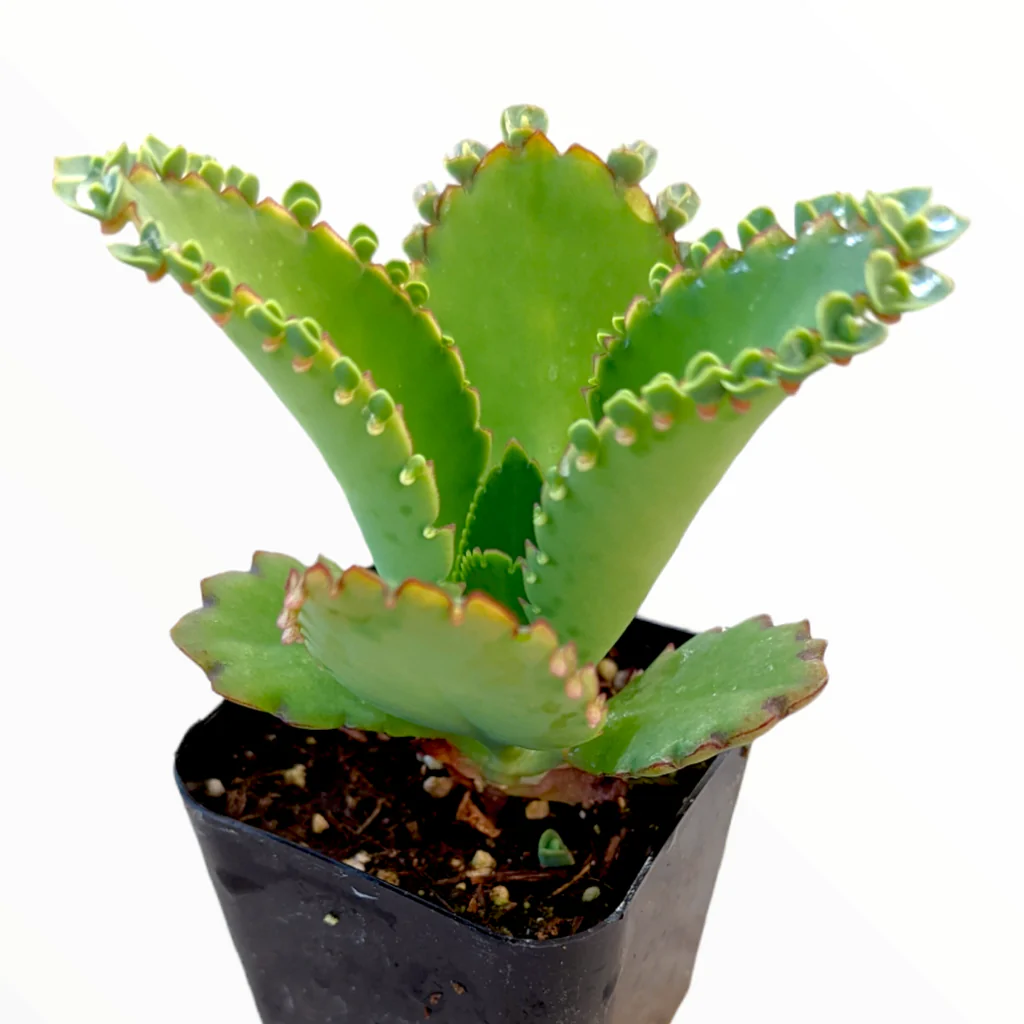This low-maintenance, monocarpic succulent is ideal for novice gardeners. It can easily be propagated, making it both a nuisance and a rewarding plant to cultivate and share with others. It features small bulbils along the edge of its leaves, which when dislodged, have the potential to sprout into new plants.
Table of Contents
Care and Propagation Information
Kalanchoe daigremontiana “Mother of Thousands” is characterized by its large, blue-green leaves and its propensity to spread quickly. As it grows, it will start to trail, which can be inconvenient for some cultivators. Therefore, it is recommended to be mindful of where this succulent is placed to prevent it from becoming a nuisance.
Watering
For “Mother of Thousands,” it’s best to water using the “soak and dry” method, allowing the soil to dry out completely before re-watering. This is the typical watering requirement for succulents.
Where to Plant
If you live in an area with cold winters, it may be wise to grow Kalanchoe daigremontiana in a pot that can be brought indoors since it is not frost hardy. This succulent thrives in either full or partial sunlight.
How to Propagate Kalanchoe daigremontiana “Mother of Thousands”
I refer to the “Mother of Thousands” as the Incredible Self-Propagating Succulent due to its remarkable ability to quickly spread. The plantlets that fall from the mother plant are able to take root in the soil that surrounds it.
Plantlets
To detach a baby plant from its mother, carefully tug on the leaf to separate the two.
You can wait a day or two for the plantlet to form a callous on its surface, and then place it on soil that drains easily.
You can also care for the plantlets like sprouted seeds. Put them in a container with good drainage and cover with a clear plastic sheet to make a mini greenhouse. Let them develop roots under the plastic covering until they are ready to be moved to a different pot.
Care and Propagation Information
General Care for Kalanchoe daigremontiana “Mother of Thousands”
Watering
For “Mother of Thousands,” it’s best to water using the “soak and dry” method, allowing the soil to dry out completely before re-watering. This is the typical watering requirement for succulents.
Where to Plant
If you live in an area with cold winters, it may be wise to grow Kalanchoe daigremontiana in a pot that can be brought indoors since it is not frost hardy. This succulent thrives in either full or partial sunlight.
How to Propagate Kalanchoe daigremontiana “Mother of Thousands”
I refer to the “Mother of Thousands” as the Incredible Self-Propagating Succulent due to its remarkable ability to quickly spread. The plantlets that fall from the mother plant are able to take root in the soil that surrounds it.
Plantlets
To detach a baby plant from its mother, carefully tug on the leaf to separate the two.
You can wait a day or two for the plantlet to form a callous on its surface, and then place it on soil that drains easily.
You can also care for the plantlets like sprouted seeds. Put them in a container with good drainage and cover with a clear plastic sheet to make a mini greenhouse. Let them develop roots under the plastic covering until they are ready to be moved to a different pot.
FAQ
What is mother of thousands good for?
Is the mother of millions toxic?
Mother of millions, hybrid mother of millions and resurrection plant are all toxic for consumption by humans, livestock, and household pets. Consumption of these plants can be dangerous, as the toxic compounds known as bufadienolides can lead to heart failure.
Why is mother of thousands toxic?
Ingesting even a small amount of the plant can cause death.
Ingestion of Mother of Millions, its hybrid version, or resurrection plant can be deadly, as these plants contain bufadienolides which can cause heart failure. This toxicity is not only dangerous for livestock and people, but also for household pets. Even a small amount of these plants can lead to death.
What plant is similar to the mother of thousands?
A pair of plant species that often go by the name of mother of thousands are Kalanchoe daigremontiana (or Bryophyllum daigremontianum) and Kalanchoe x laetivirens. Similar in appearance, they are both part of the Kalanchoe genus within the Crassulaceae family.
Is Kalanchoe the same as mother of thousands?
Two types of plants referred to as mother of thousands are Kalanchoe daigremontiana (also known as Bryophyllum daigremontianum) and Kalanchoe x laetivirens.



